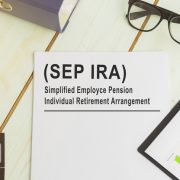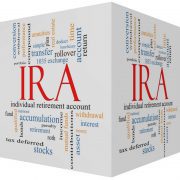Self-Directed IRA Funding Options
It’s great to have a Self-Directed IRA, because it allows you to create an investment portfolio for retirement that will suit your needs. You can invest in nontraditional retirement assets like real estate, precious metals, and even tax liens to exercise a wider range of freedom when it comes to managing your retirement assets. But the journey of a thousand miles begins with a single step, and far too many retirement investors are thrown off by the idea of a Self-Directed IRA as being complicated.
In particular, they’re often worried about Self-Directed IRA funding options. Just how do you get enough money into a Self-Directed IRA to make an impact on your retirement portfolio? How can you invest in real estate? And how does the process begin? In this article, we’ll look at some of the most popular ways for you to fund a Self-Directed IRA:
Funding Option #1: Contributions
The simplest and most direct way to begin a Self-Directed IRA is to open it and begin making contributions. Your contributions are limited by the type of account you have—for instance, a Roth IRA in 2020 currently has a limit of $6,000 per year if you’re under the age of 50, but $7,000 for those who are 50 or older.
Contribution limits vary depending on the type of account you have. For example, a Self-Directed Roth IRA has the contribution limits mentioned above, but a Self-Directed Solo 401(k) will have far higher limits: $19,500 in 2020, according to the IRS website.
Understanding the differences between these limits—as well as whether or not these contributions will be tax-deductible—is a critical first step in researching the type of account you want to have.
Funding Option #2: Rollovers
Let’s say you have an old 401(k) from a previous place of employment and you want to fund a new Self-Directed IRA. All of those retirement funds are sitting in the 401(k), but you’d rather have them in a Self-Directed IRA, where you’ll be able to control them more easily. For example, you can rollover a 401(k) into a Self-Directed Traditional IRA, but you’ll likely want to contact your previous employer to get an idea of what the procedures will be. You can also work with a Self-Directed IRA administration firm to ensure that you have all your ducks in a row.
Funding Option #3: Transfers
A transfer is a direct way of moving funds from one institution to the other, while a rollover is a distribution you take from an account and move to another account within a specified amount of time. Transfers are very convenient for anyone looking to start a Self-Directed IRA, but the rules in which these are allowed might be different. For example, you can’t expect to transfer funds from a completely different account type (such as a 401(k)) into a Roth IRA and expect that you’ll have the tax benefits of tax-free distributions in retirement. But there may be instances in which a transfer is allowed.
Funding Option #4: Loans (In Certain Instances)
Keep in mind that taking non-recourse loans with a Real Estate IRA is not a method of funding an account, as we have to distinguish it from the options listed above. Instead, it may be a way for your IRA to fund a purchase of real estate. But the point here is that you can secure the loans an IRA needs to make a purchase of real estate, which is important to real estate investors who flock to the Self-Directed IRA for the freedom it gives them.
Interested in learning more about Self-Directed IRAs? Contact American IRA, LLC at 866-7500-IRA (472) for a free consultation. Download our free guides or visit us online at www.AmericanIRA.com.








